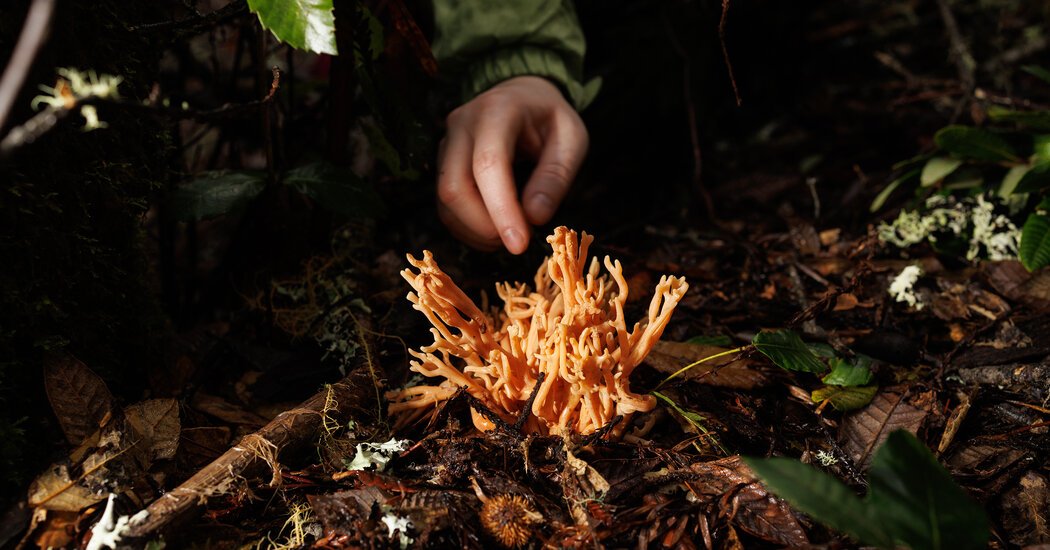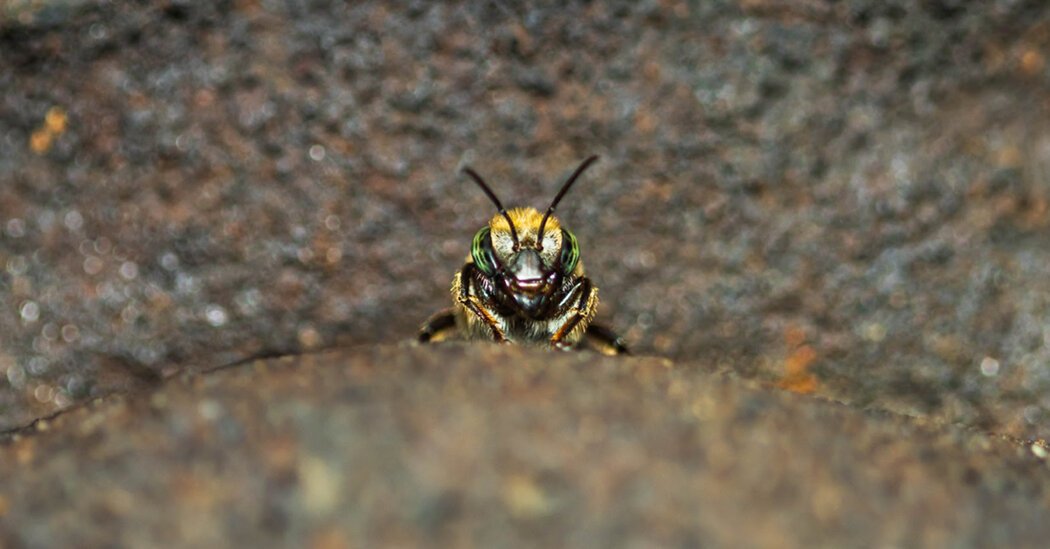Strange things appear in the forests and chaparral of California after a big rain. Invigorated by the damp, fungi living quietly in the soil sprout fruiting bodies. Some have the familiar mushroom shape of a stalk and a cap, but others resemble fluorescent corals, wads of clear brown jelly, brilliant yellow buttons — bizarre forms visible to the naked eye for only a brief window while the organisms release their spores.
With each emergence comes a chance for mushroom hunters to identify new species. As many as 95 percent of the planet’s fungal species have yet to be described, according to a 2023 report from Royal Botanic Gardens, Kew. For some years now, professional mycologists and hobbyists alike have been using DNA sequencing on foraged fungi, said Mandie Quark, a mycologist and the communications lead for California’s Fungal Diversity Survey, which aims to add sequences from tens of thousands of fungi to scientific databases. With sequencing, fungus enthusiasts often identify fungi that are the first examples of their kind in the databases.
“We could probably go outside right now here in California — or really, wherever you are at in North America — and we could easily find a new species of mushroom or fungus that hasn’t been described,” Ms. Quark said.
At the Sonoma County Mycological Association’s annual foraging camp this January, Ms. Quark and her partner, Alan Rockefeller, helped hundreds of campers identify fungi plucked from the soil in the forest near Occidental, Calif. Red-and-white paper takeout boxes, each containing a fungus rather than a corn dog or French fries, piled up on picnic tables. In a makeshift lab, volunteers demonstrated how to extract DNA from the growths. Sequencing a short region of each fungus’s genetic code can tell them apart.

Once collectors receive a match for their sequence, they can enter the information on iNaturalist, a website where hobbyists can share observations of the natural world. Meanwhile, organizations like the Ohio Mushroom DNA Lab and Mycota Lab, founded by Stephen Russell, a biochemist at the University of Michigan, enter the sequences into scientific databases accessible to the research community. This way, the information generated by dispersed networks of foragers can be funneled directly to scientists and conservation organizations.
Recent years have brought an explosion in sequencing, Ms. Quark said. More than 21,000 samples have already been sequenced this year, she said, up from 5,600 in 2022. “We will probably end the year with over 40,000,” she said.
And there are still many fungi left to be identified. Some of these organisms, living as a network of threads hidden in the soil, may not have sent up a fruiting body in years. But after a drenching rain in Southern California, collectors might encounter mushrooms that have not been seen for decades, Ms. Quark said.
Generating sequences from fungi in the soil, then, may be the next step. Only then will it be possible to get a handle on the true diversity of fungal species in North America, and, as the climate changes, consider ways to conserve what lies beneath the surface.
“We are at this incredible fulcrum right now, where we need to figure this out,” Ms. Quark said.










